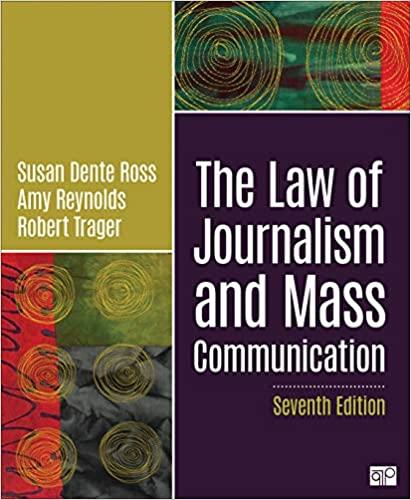Answered step by step
Verified Expert Solution
Question
1 Approved Answer
When a defendant allocutes, what kind of plea has the defendant entered? Group of answer choices Standing mute Guilty Alford plea Nolo contendre Flag question:
When a defendant allocutes, what kind of plea has the defendant entered? Group of answer choices Standing mute Guilty Alford plea Nolo contendre Flag question: Question 2 Question 2 2 pts When the defense provides the prosecution with evidence they intend to present at trial in support of an alibi, they are complying with ____________. Group of answer choices quid pro quo the principles of the courtroom workgroup mandatory disclosure reciprocal discovery Flag question: Question 3 Question 3 2 pts Which of the following is NOT a pretrial motion: Group of answer choices motion to suppress motion to change venue motion to show cause motion to dismiss Flag question: Question 4 Question 4 2 pts A wife cannot be forced to testify against her husband in his trial about things he told her in confidence. However, there are exceptions. Which of the following is NOT one of those exceptions? Group of answer choices when he is accused of child abuse when he is accused of spousal abuse when there was a third party present for the conversation when he has written it in a letter to his wife Flag question: Question 5 Question 5 2 pts _____________ is an out of court statement that is offered into evidence to prove the truth of the matter asserted of which the witness has no direct knowledge. Group of answer choices Perjury A confession A dying declaration Hearsay Flag question: Question 6 Question 6 2 pts Prior to deliberation, the jury is provided instructions and guidance on the meaning of defenses and the elements of a crime. Who is responsible for informing the jury about the law and how to apply it? Group of answer choices the foreperson prosecutor No one judge Flag question: Question 7 Question 7 2 pts At what point is the accused referred to as a defendant (rather than a suspect)? Group of answer choices When they are booked at the police department When they are first arraigned When the information is filed When they are arrested Flag question: Question 8 Question 8 2 pts When a grand jury determines that there is not enough evidence to support probable cause and refuses to return an indictment, this finding is called what? Group of answer choices no bill not guilty nolle prosequi no contest Flag question: Question 9 Question 9 2 pts What is the purpose of bail? Group of answer choices To punish the defendant for the alleged offense To prepay the defendant's fines and fees To ensure that the defendant doesn't have enough money to flee To ensure the defendant will return for trial Flag question: Question 10 Question 10 2 pts The prosecutor plans to enter the defendant's shoes into evidence as an exhibit. They match the footprints from the scene of the crime and contain traces of the dirt and blood found at the crime scene. The witness explains that the defendant appeared to be wearing those shoes on the day of the offense. Which of the following types of evidence are the shoes? Group of answer choices Hearsay evidence Testimonial evidence Real evidence Prejudicial evidence
Step by Step Solution
There are 3 Steps involved in it
Step: 1

Get Instant Access to Expert-Tailored Solutions
See step-by-step solutions with expert insights and AI powered tools for academic success
Step: 2

Step: 3

Ace Your Homework with AI
Get the answers you need in no time with our AI-driven, step-by-step assistance
Get Started


